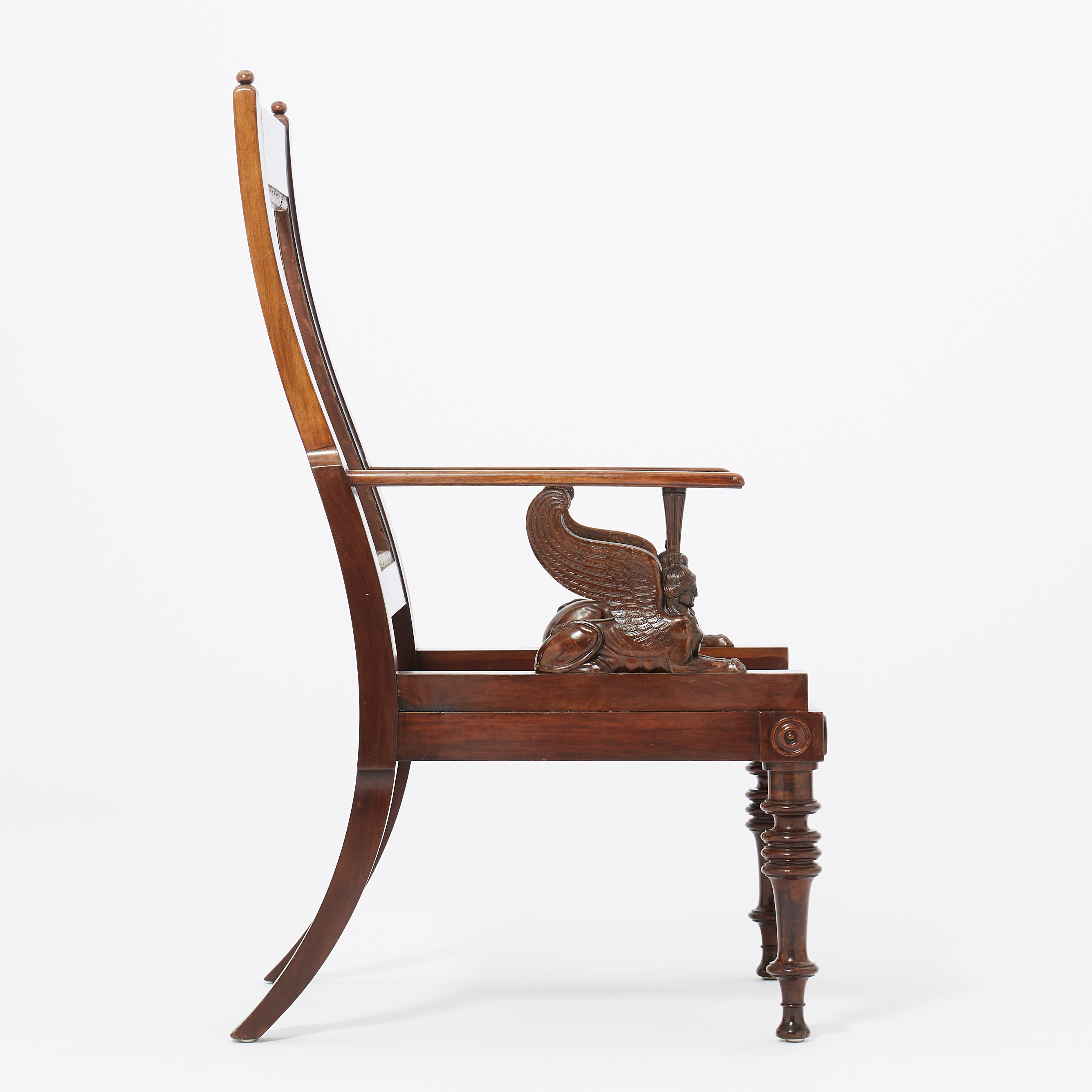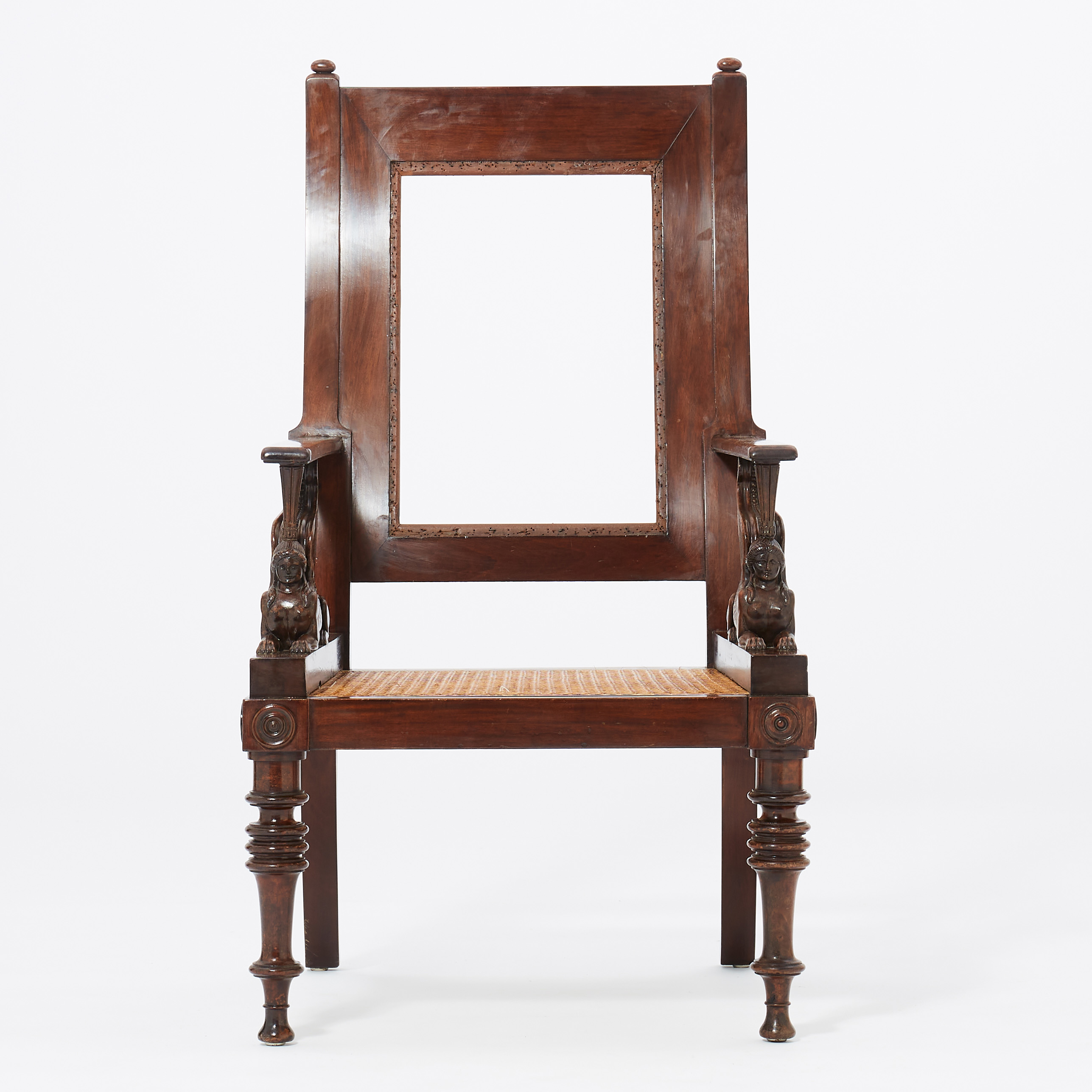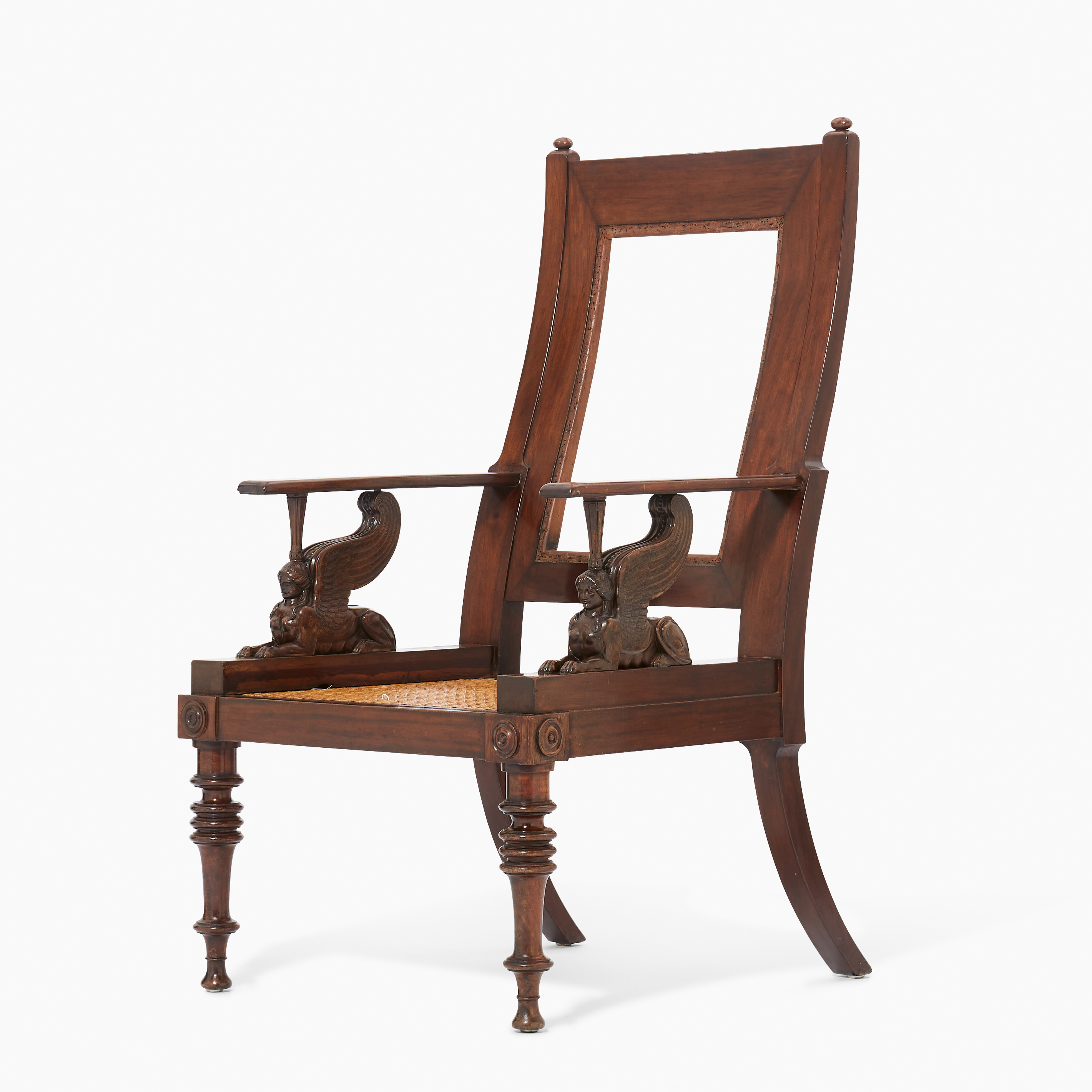Armchair with Sphinx in Pompeian Style
after a design by Hermann Ernst Freund (1786-1840)
Copenhagen, 1830’s
Mahogany, solid, carved, caned seat
Height: 116 cm | Width: 65 cm | Depth: 70 cm | Sitzhöhe: 45 cm
Height: 45.7 inch | Width: 25.6 inch | Depth: 27.5 inch | Seating height: 17.7 inch
Ref No: 3337
Only a few examples of this iconic armchair are known today – one in the collection of the Danish Museum of Decorative Art. The design of the chairs remains close to the Classical pattern with quite straight, smooth armrests and a heavy seat rail. In this it differs from the numerous earlier or contemporary armchairs with sphinxes, several variants of which were made for instance by Jacob in Paris. Alongside the klismos chair and the curule chair, the sphinx chair became one of the most popular antique-inspired chairs during the Empire period. While others almost hide the sphinx behind deep upholstered seat cushions, Freund’s chair possesses the sculptural qualities that much of the furniture of antiquity also possessed. The fully and exquisitely carved Sphinxes and the impressive sweep from the backrest to the back of the legs is a reminiscence of models found in Pompeji and Herculaneum just a few decades before.
From the memories of his son Victor Freund we know, that his father worked together with two craftsmen making furniture after his designs for him. One was the wood carver Alexander Wahl, “who could completely satisfy him with the way in which he created sphinxes, animals legs and other objects with which the furniture was provided” As a cabinet-maker, Freund used a distant relative, Georg Wilms, who was praised for his ability to follow the artist idea and design in every detail.
Literature:
- Gelfer-Jorgensen, Mirjam, The Dream of a Golden Age, Danish Neo-Classical Furniture 1790-1850, Rhodos Publisher, 2004.
- Gelfer-Jorgensen, Mirjam, Herculanum paa Sjaelland, Klassicisme og nyantik i dansk möbeltradition, Rhodos Publisher 1988.



